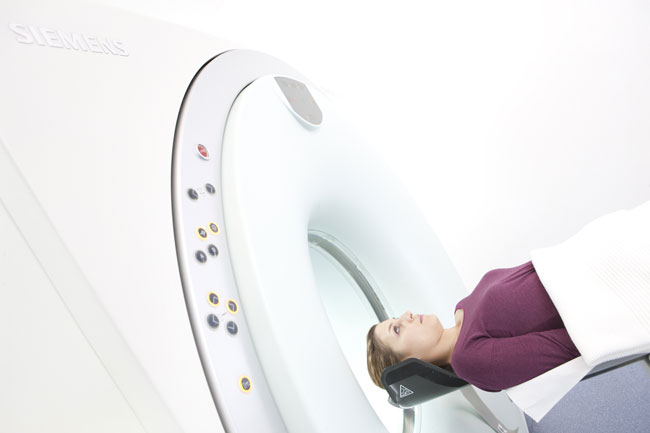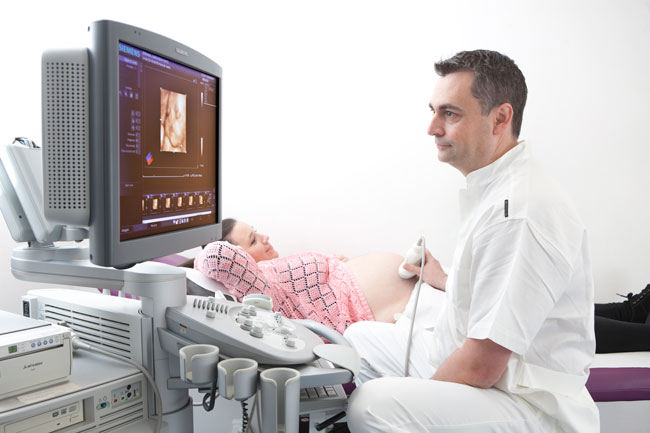Servicios a particulares
Servicios diagnósticos
Open resonance
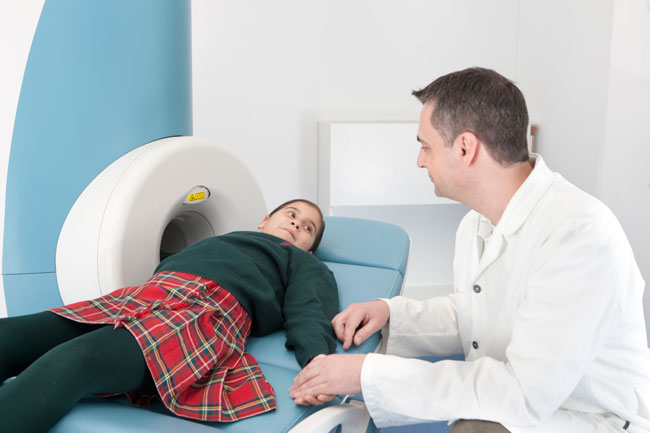
Magnetic nuclear resonance allows us to obtain very detailed images of the body, 2D and 3D. Could give information about pathologies that will not be seen with other image techniques.
As well it is used when other image proves are contradicted, such as for example in the case of an allergy in iodine contrast that CAT is used.
Whether in CAT and radiographs are not used ionized radiations (x rays).
In the case of patients with claustrophobia, reduced mobility and children, in Médicis we count with specific protocols and a unique machine in Navarre, specially, designed for the limbs exploration the RM 1.0 Oni GE.
FAQS
How much time does it cost a magnetic resonance exploration?
A magnetic resonance exploration can cost since 20 minutes to more than an hour, depending on the type of study that is going to be done.
If I suffer from claustrophobia, how can I go through a magnetic resonance?
In Médicis we count with a special device unique in Navarre, specially designed for the exploration of limbs, the RM 1.0 Oni GE, that realize the resonances on an open way that offer the tranquility and comfort for those patients that suffer claustrophobia.
Could I undergo a magnetic resonance if I wear screws, prosthesis, implants?
Yes, habitually the used materials are compatible with the magnetic resonance and there is no risk of displacement. In specific cases, there should be made a request about the used materials.
If I wear piercings, should I take them off to undergo a magnetic resonance?
Yes. You should take them off because they can heat up during the prove and produce burns.
Closed resonance
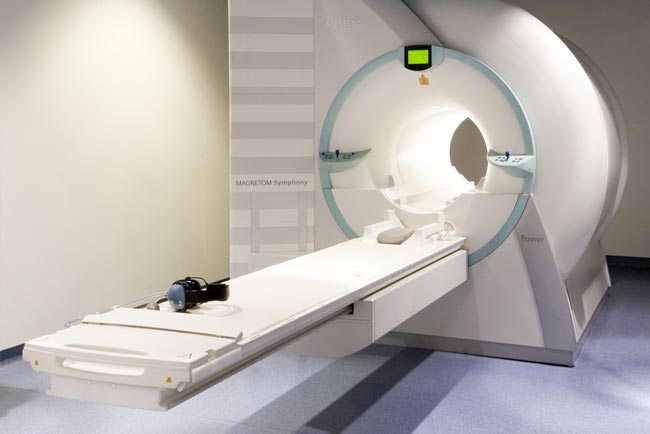
Nuclear Magnetic Resonance allows obtaining very detailed images about the body, 2D and 3D. Could even contribute with information about pathologies that cannot be seen with other image techniques.
The resonances, which could be done with and without contrast, are included in the clinic history of the patient in the Navarre Health Service, could accelerate somehow the waiting processes during the diagnosis phase.
Types
- Head: Skull, cais, orbits, facial, paranasal sinuses, TMJ.
- Column: Cervical, dorsal, lumbar, lumbosacral, sacrum.
- MSK: Shoulder, scapular waist, clavicle, scapula, arm, elbow, forearm, wrist, hand, finger, pelvis, pubis, sacroiliac hip, thigh, leg, ankle, Aquila’s, feet, Morton neurinoma, sternum.
- Abdomen: Abdominal, iliopancreaitc, suprarenal.
- Breasts
FAQS
How much time does it cost a magnetic resonance exploration?
A magnetic resonance exploration can cost since 20 minutes to more than an hour, depending on the type of study that is going to be done.
If I suffer from claustrophobia, how can I go through a magnetic resonance?
In Médicis we count with a special device unique in Navarre, specially designed for the exploration of limbs, the RM 1.0 Oni GE, that realize the resonances on an open way that offer the tranquility and comfort for those patients that suffer claustrophobia.
Could I undergo a magnetic resonance if I wear screws, prosthesis, implants?
Yes, habitually the used materials are compatible with the magnetic resonance and there is no risk of displacement. In specific cases, there should be made a request about the used materials.
If I wear piercings, should I take them off to undergo a magnetic resonance?
Yes. You should take them off because they can heat up during the prove and produce burns.
CAT (Computerized Axial Tomography)
CAT Scan
El TAC es una prueba diagnóstica que nos permite realizar estudios de estructuras óseas y exploraciones toracoabdominales complejas, con y sin contraste. A través de rayos X, realiza reconstrucciones del interior del cuerpo tridimensionales y multiplanares.
El contraste no iónico que empleamos reduce sensiblemente las reacciones alérgicas.
Todas las pruebas contrastadas se realizan bajo supervisión médica y personal de enfermería.
Tipos: TAC abdominal, TAC craneal, TAC torácico, TAC lumbosacro, TAC de órbitas.
Is a diagnostic proving that allows us to realize bony structure studies and complex trunk-abdominal explorations, with and without contrasts. Through X rays, makes possible the reconstruction in the inner body, tridimensional and in multiple plains.
The non- ionic contrast that is used, reduce noticeably the allergic reactions.
All proves are done under medical supervision and nursery personal.
Types: CAT abdominal, skull CAT, thoracic, lumbosacral CAT, orbital CAT.
CAT Dental Scan
Dental CAT gives us indispensable information when an implant planning is going to take place, obtaining precise images in 2D and 3D from the bony structures in the mouth. The powerful resolution of our software allows us to visualize the most delicate details for a liable and fast diagnosis, moreover, accuracy for the measures of density and bony quality.
We count with the specific personal for the realization of the proves, and we are working with the different programs such as: Dental Scan, BTI, Nobleguide, Simplant and Facilitate.
Types: Dentalsacn, BTI, Nobel, Nobel Guide, Simplant.
Echography
Echography 4D
Stop dreaming about it… Feel it!
Echography campus and prenatal diagnosis, had experimented important improvements thanks to the 4D echography, which offers the possibility of watching the baby in volume, color, movement and real time. The visual quality of this echography is very high so it results in an unequally to discover your baby even before you can have it on your arms.
In Médicis we make an effort to be able to capture, during an hour, the best images of the baby gestures, its smile, yaws, and features. Moreover, offer the parents an unforgettable experience that would remember during the rest of their lives.
They could be done at any moment during pregnancy, but preferably between the 24th and 31st week for its better visualization.
1 HOUR VISUALIZING ECHOGRAPHY 4D + CD WITH PICTURES AND VIDEO + PRINTED PICTURES
Diagnoses
Echography is a technology based on ultrasound that draws images from the inner body that are not damaging.
In arterial pathology allows studying the arterial system of the superior limbs, inferior limbs and supra-thoracic trunk, providing two types of information: Doppler curves and the tension gradients.
The Doppler curves study allows to know the magnitude of an arterial obstruction and its variation with the exercise, and the one of the tensional gradients makes possible the topographic diagnosis of the occlusive lesions, allowing to practice frequent studies and repetitive about the evolutionary curse of the disease, at the same time the pre and post-surgery applications.
In venous pathologies it is used the deep thrombophlebitis, fundamentally, the proximal thrombophlebitis of inferior limbs, to value the valvular insufficiency of the varicose veins and the arterioveins fistulae detection.
Types: Obstentric, 4D, abdomen, shoulder, arm and other limbs.
Bony densitometry
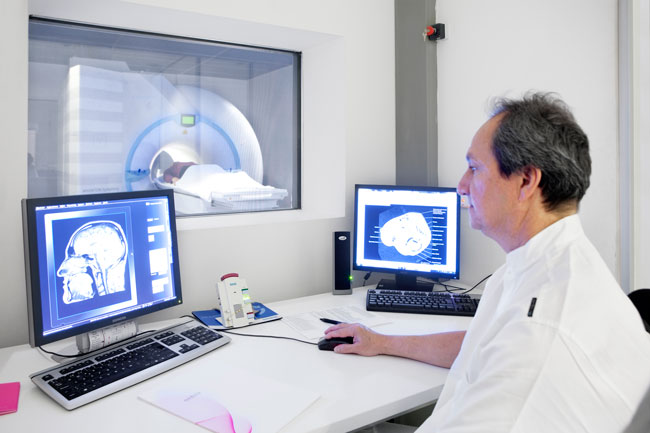
With this prove it is possible to quantify the bone mineral density, based on the appropriate tomographic images, which allow a following of the osteoporosis and osteopenia.
Is an easy prove because of its rapidity and comfort for the patient, and for non being painful.
Types: column, thorax, cranial, shoulders, hands and other limbs.
Servicios médicos
Telemedicine
Thanks to the tele-medicine system, our center has access to specialized first level professionals on distance on the national field. This way, our center offers very precise and immediate diagnosis (24 hours), reducing errors, optimizing resources and improving the service quality.
Médicis owns to a Specialized in radiology Doctors net, which its team is headed by Dr. Javier Mota, medicine doctor, specialized in MIR in radio-diagnosis at the Miguel Servet Hospital, sub-specialized in musculoskeletal sport lesions. He completed its academic formation at Duke University (NC) and at Hospital for Joint Diseases (NY).
- Consult second opinion. We put to your position this specialist team in different medical and independent disciplines, so to obtain a second opinion about your case and reduce the error probabilities in your diagnosis.
It could requested a second version, a second inform of the previous proves, moreover a valuation of the technical quality, which thanks to our agreement with the Navarre Health Service, would directly be included in the clinic history. - Médicis quality. We count with a double lecture system, based on American protocols and with an appreciation method of technical quality of the image through independent thirds, lowering the diagnosis error.
Traumatologic consult
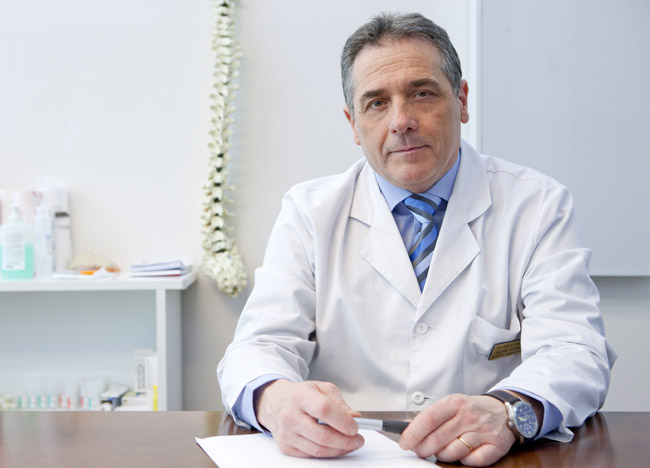
In Centro Médicis is the office of Dr. Angel M. Hidalgo. He specializes in orthopedic surgery and traumatology, with over 20 years experience in the surgical treatment of spinal processes, such as lumbar pathology, cervical problems and deformities of the child and adult.
- Section Chief of Spine Surgery Hospital of Navarra.
- Surgeon Head of Surgical Nursing of the bullring of Pamplona.
- Honorary Professor of Surgery at the Public University of Navarra.
- Clinical Associate Professor at the University of Navarra. – Ex-Member of the Scientific Committee GEER (Spine Surgery Society).
- President-organizer GEER Congress 2012 in Pamplona.
For more information about their services, treatments, and publications please visit their website www.drhidalgo.es
Consulta de radiología vascular
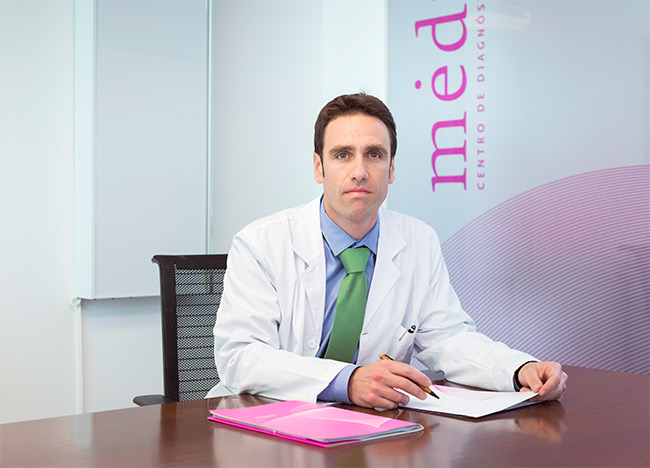
En el centro Médicis se encuentra la consulta del Dr. Iñigo Insausti. Radiólogo Vascular intervencionista con más de 10 años de experiencia, que trabaja en el Complejo Hospitalario de Navarra y Médicis.
Contamos con dos métodos complementarios para la eliminación de las varices de forma no invasiva: microespuma y Clarivein, que suponen la desaparición de las varices sin anestesia, ni ingreso, ni baja laboral. En definitiva, sin dolor.
En Médicis decidimos ampliar nuestras consultas, incluyendo ese nuevo servicio de radiología vascular, ya que en la actualidad, nueve de cada diez adultos en España sufren importantes cambios en las venas de sus piernas.
Los síntomas más comunes de las personas que padecen varices son pesadez de piernas, hinchazón, calambres, dolor, cansancio, manchas e incluso úlceras en las fases más avanzadas.
¿PORQUÉ TRATAR LAS VARICES?
Las várices no son solamente un problema estético. Es una señal de que la circulación venosa es deficiente o está deteriorada. Las varices no mejoran por sí solas, por lo que se necesitan ser diagnosticadas y tratadas lo antes posible, siendo imprescindible para ello la valoración de un especialista.
DIAGNÓSTICO Y TRATAMIENTO
El médico mediante una exploración física completa y un estudio con ecografía Doppler realizará un mapa de toda la circulación venosa de la pierna con el que determinará el tratamiento indicado según las necesidades del paciente.
MÉTODOS
En Medicis ofrecemos dos métodos de tratamiento complementarios para la eliminación de varices, microespuma y clarivein , y es el médico quien indica el más adecuado para el paciente dependiendo del tipo de variz que éste presente.
El tratamiento a través de la microespuma no necesita anestesia, ni baja laboral, pero requiere de varias sesiones, según las necesidades del paciente.
Por su parte, el tratamiento con ClariVein® permite la eliminación permanente de las varices más profundas, en una sola sesión.
Ambos tratamientos tienen como características principales: sin dolor, sin cirugía y permiten reincorporarse inmediatamente a su vida diaria.
VENTAJAS PARA EL PACIENTE
- Seguro y efectivo.
- No requiere quirófano.
- No necesita anestesia.
- Sin molestias antes ni después del tratamiento.
- Rápida recuperación y retorno a las actividades cotidianas.
- Excelente resultado estético.
PREGUNTAS FRECUENTES
¿Cuáles son los efectos secundarios tras un tratamiento de varices?
En algunos casos se producen apariciones temporales de hematomas, pigmentación residual, pequeñas lesiones cutáneas y reacciones alérgicas sin gravedad.
¿Tras un tratamiento de varices hace falta baja laboral?
No. Después del procedimiento el paciente requiere de una media elástica con la que puede realizar vida normal.
En el caso de la actividad física se podrá retomar en una semana.
¿Los tratamientos de varices necesitan anestesia? ¿Son dolorosos?
No se utiliza anestesia general, pero sí es necesaria una anestesia local.
Aquellos pacientes que lo deseen, en Médicis contamos con un equipo de anestesistas para lograr una mayor tranquilidad durante la sesión.
Breast consultation
Médicis cuenta con la colaboración externa del Dr. Luis Apesteguia, especialista en Radiología y Patología Mamaria, con 30 años de experiencia.
Detección precoz y seguimiento de cualquier patología mamaria.
Second opinion
Médicis cuenta con un equipo de especialistas en Radiología para que los pacientes puedan solicitar una segunda opinión de su caso y confirmar así su diagnóstico.
Preguntas frecuentes
[hs-faq limit=”-1″]
Previous date on-line
Fill in the formulary and we will contact you in the less time possible.
